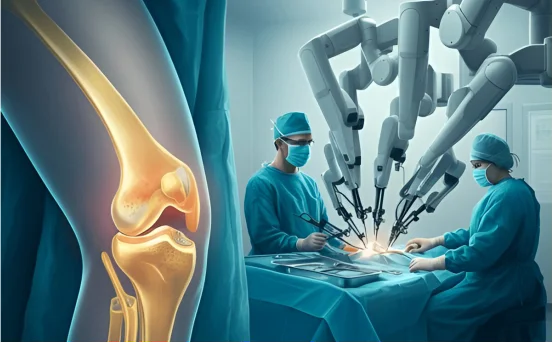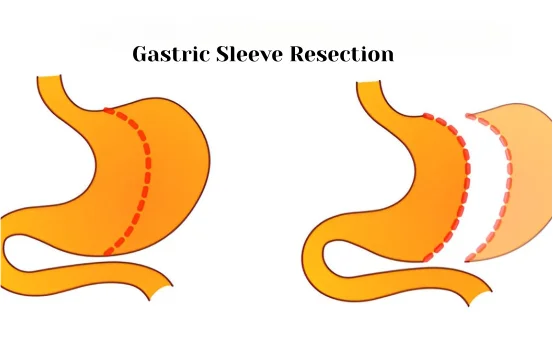Patellar Realignment Surgery aims to correct the misalignment in the kneecap. This surgery is a great option for patients who suffer from chronic knee pain or instability. It can also improve mobility. The treatment for patellar realignment surgery is designed to enhance overall knee function.
What is Patellar Realignment Surgery ?
The Patellar Realignment Surgery involves the repositioning of the kneecap in order to make sure it tracks correctly within the femoral groove when the knee moves. Patients with Patellar Instability or Patellar Tracking Disorder are usually recommended to undergo this procedure.
Different types of patellar realignment are available, including:
Patients considering options for their condition should explore the treatment for patellar realignment surgery to determine if it’s the right choice for them.
- Proximal Alignment– Focuses on soft tissues around the knee.
- Distal Alignment involves changing the position the tibial tubercle (bone at which the patellar tendons attach).
Why is Patellar realignment surgery needed?
Misalignment of the patellar joint can have a negative impact on knee function and life quality. Some of the most common reasons to undergo surgery are:
- Chronic Kneecap Dislocation
- Maltracking can cause knee pain
- Ineffective conservative treatments (e.g. bracing or physiotherapy).
- The anatomy of the knee: structural abnormalities
Early intervention can reduce the risk for patellofemoral osteoarthritis.
Diagnosis Before Surgery
To determine if realignment is the best solution, a thorough diagnosis is necessary. Evaluations typically include:
- Physical Examination of Knee Movement and Stability
- X rays for assessing kneecap alignment
- MRI scan for identifying soft tissue damage
- CT scan for checking bone structure abnormalities
These results will be used by the orthopedic surgeon to determine the best surgical strategy.
Treatment Plan For Patellar Realignment Surgery
1. Pre-operative preparation
Patients undergo the following:
- Medical imaging and evaluation
- Stopping certain medications
- Strengthening muscles before surgery (prehab).
- Make lifestyle adjustments to prepare for mobility limitations after surgery
To reduce the risk of surgery, patients are advised to stop smoking and to manage any health conditions that they may have (such as diabetes or hypertension).
2. The Surgical Procedure
The surgeon can use one or more techniques depending on the type and severity of the misalignment.
Medial Patellofemoral Ligament (MPFL) Reconstruction
- Replace or tighten the ligament that stabilizes the kneecap.
- This is often used to treat recurrent patellar dysfunction.
Tibial Tubercle Osteotomy (TTO)
- Screws are used to move and fix the tibial tubeercle in a more advantageous position.
- Re-aligns the patellar tendon, and helps to track the kneecap.
Lateral release
- Release the tight lateral structures that are pulling out the kneecap.
- MPFL reconstruction is often combined.
The surgery is performed under spinal or general anesthesia, and usually takes 1-2 hours.
3. Post-operative care
After surgery, it is important to follow the right care plan for a successful recovery. Care plans typically include:
- Pain Management with Medication
- Use of a brace for the initial immobilization
- Ice Therapy To Reduce Swelling
- Keep the leg elevated for fluid retention
Depending on the surgery performed, patients may need crutches from 2 to 6 weeks.
4. Physiotherapy Rehabilitation
The rehabilitation process begins within days of surgery and is crucial to restoring functionality. These stages include:
Early phase (0-6 weeks).
- Gentle range-of-motion exercises
- Muscle activation (quadriceps strength)
- Weight-bearing controlled
Mid Phase (6-12 weeks)
- Progress to full weight bearing
- Resistance Exercises
- Stationary cycling
Late Phase (3-6 months)
- Sport-specific training
- Exercises involving agility and plyometrics
- Return to full activity after surgeon’s clearance
A guided physiotherapy program can have a positive impact on recovery.
Benefits Of Patellar Realignment Surgery
- Improvements in knee stability and alignment
- Reduced kneecap Pain
- Reduced risk of future dislocations
- Mobility and improved quality of life
- Preventing long-term knee osteoarthritis
Complications and Risks
There are risks associated with all surgeries, including:
- Infection
- Blood Clots
- Hardware irritation (screws and pins)
- Limited range of motion or stiffness
- Rare cases of patellar fractur
These risks can be greatly reduced by choosing a highly-skilled orthopedic surgeon and following the post-op protocols.
What Makes A Good Candidate for a Job?
Patellar realignment surgery is recommended for:
- Patients with chronic dislocations
- People with malalignment due to trauma or congenital causes
- Patients who do not respond to conservative treatment
- The knee stability of athletes or active individuals
The appropriateness of the surgery will be determined by a comprehensive orthopedic evaluation.
Conclusion
Patellar Realignment Surgery is a highly-effective solution for people who suffer from kneecap instability, dislocations and pain. Most patients can return to a normal active lifestyle with the help of personalized rehabilitation plans and advances in surgical techniques.
Consult a qualified orthopedist if you or someone else you know has persistent patellar issues to determine if realignment surgery would be the best option.























